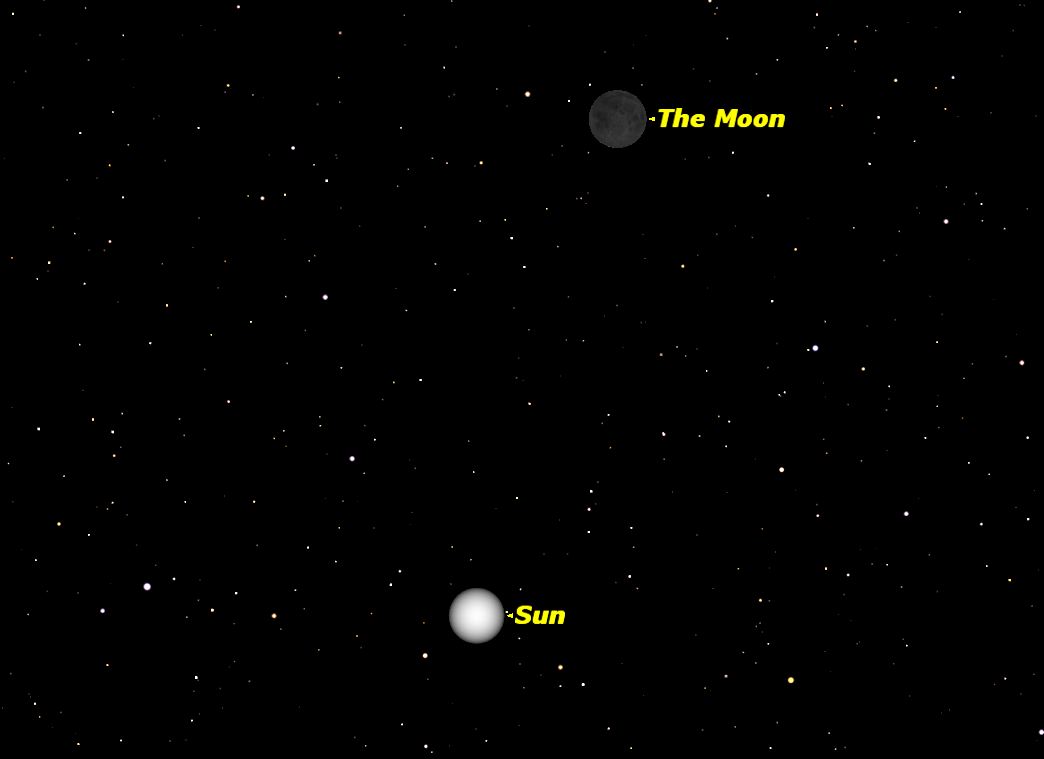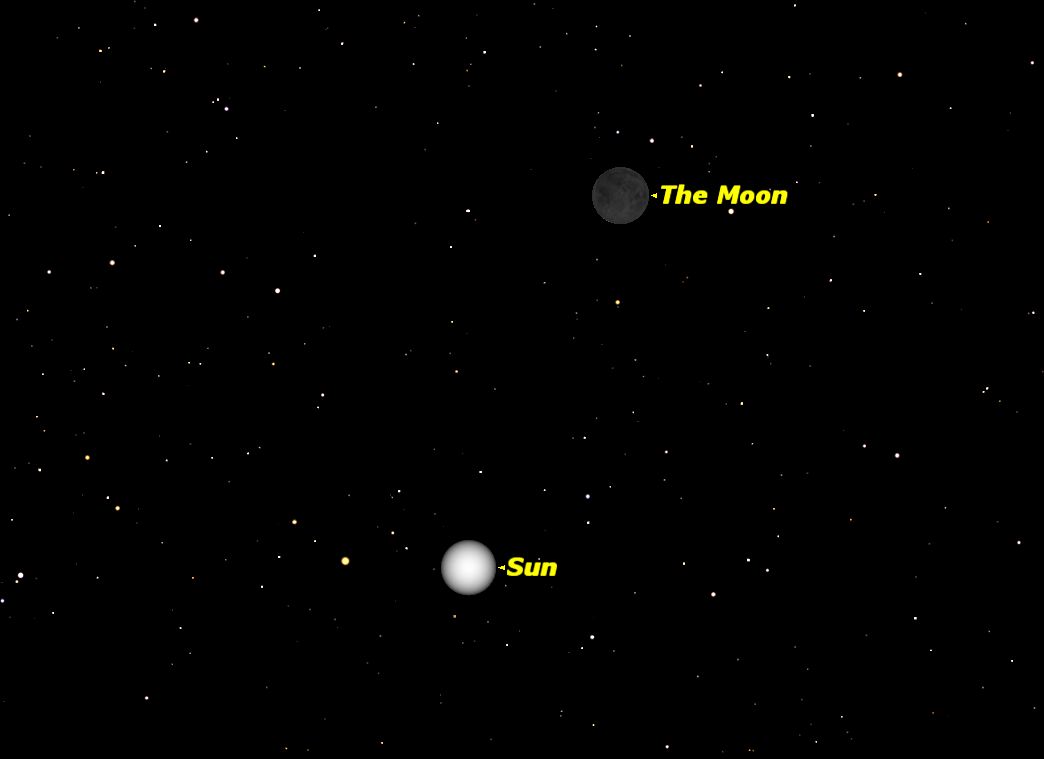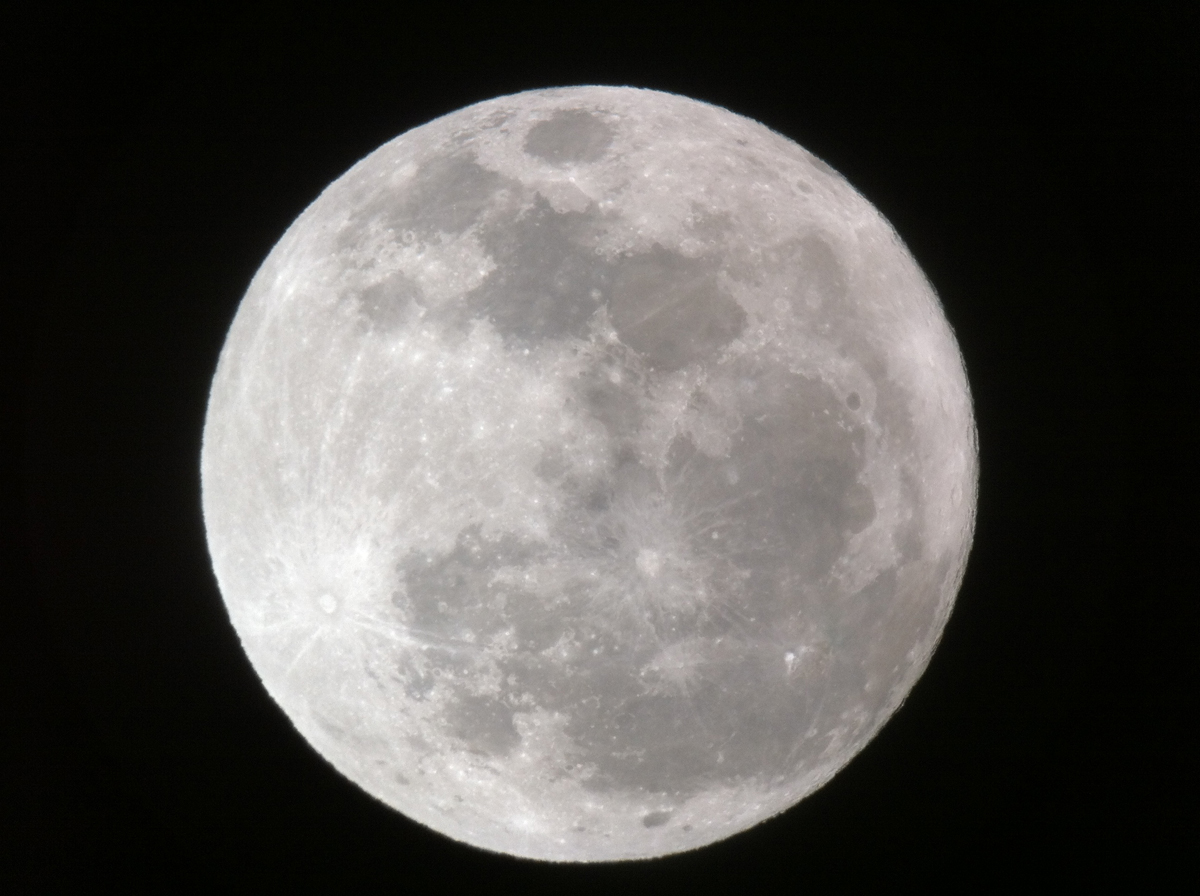February's New Moon Is Nowhere To Be Found

Here’s a trick question for you: When is new moon this month? Stumped? The answer is, there is no new moon this February.
The synodic period of the moon, new moon to new moon, is 29.53 days. February has only 28 days, so it’s quite possible that if the last new moon occurs at the end of January, the next new moon will occur at the beginning of March. It just happens to be that February 2014 is one of those months.
Some people think that the period of the moon 27.32 days, but that is the period of the moon relative to the stars, the way orbital periods are normally measured. Remember that while the moon moves around the Earth, the Earth also moves around the sun, and results in that 2.2-day difference between the moon’s actual period and the little bit of extra movement of Earth. [The Moon: 10 Surprising Facts]
As a result of the missing new moon in February, both January and March have two new moons. In January, they were on January 1 and 30; in March, on March 1 and 30.
The illustrations show the sun dimmed down enormously so that the stars behind it and the moon in front of it are made visible, something you could never see in the real sky. Notice that the moon is in a slightly different position relative to the sun at new moon in January and March. That’s because the orbit of the moon is tilted by five degrees relative to the sun’s path across the sky. That’s why we don’t have a solar eclipse every month: the moon passes above or below the sun.
We only get an eclipse when the orbit of the moon crosses the path of the sun, called the nodes of the moon’s orbit. There won't be a solar eclipse in January or March. The second new moon in March is also a miss, but on April 29 the moon will pass directly in front of the sun, causing an eclipse.
Unfortunately, this April 29 eclipse will only be visible as an annular ("ring of fire") eclipse in Antarctica, although it will be a partial eclipse over Australia and the Southern Ocean.
Breaking space news, the latest updates on rocket launches, skywatching events and more!
Although in recent years we have given a special name, "blue moon," to the second full moon in a month, there doesn’t seem to be a special name for a second new moon in a month, or a month without any new moon.
This article was provided to SPACE.com by Simulation Curriculum, the leader in space science curriculum solutions and the makers of Starry Night and SkySafari. Follow Starry Night on Twitter @StarryNightEdu. Follow us @Spacedotcom, Facebook and Google+. Original article on Space.com.

Geoff Gaherty was Space.com's Night Sky columnist and in partnership with Starry Night software and a dedicated amateur astronomer who sought to share the wonders of the night sky with the world. Based in Canada, Geoff studied mathematics and physics at McGill University and earned a Ph.D. in anthropology from the University of Toronto, all while pursuing a passion for the night sky and serving as an astronomy communicator. He credited a partial solar eclipse observed in 1946 (at age 5) and his 1957 sighting of the Comet Arend-Roland as a teenager for sparking his interest in amateur astronomy. In 2008, Geoff won the Chant Medal from the Royal Astronomical Society of Canada, an award given to a Canadian amateur astronomer in recognition of their lifetime achievements. Sadly, Geoff passed away July 7, 2016 due to complications from a kidney transplant, but his legacy continues at Starry Night.



